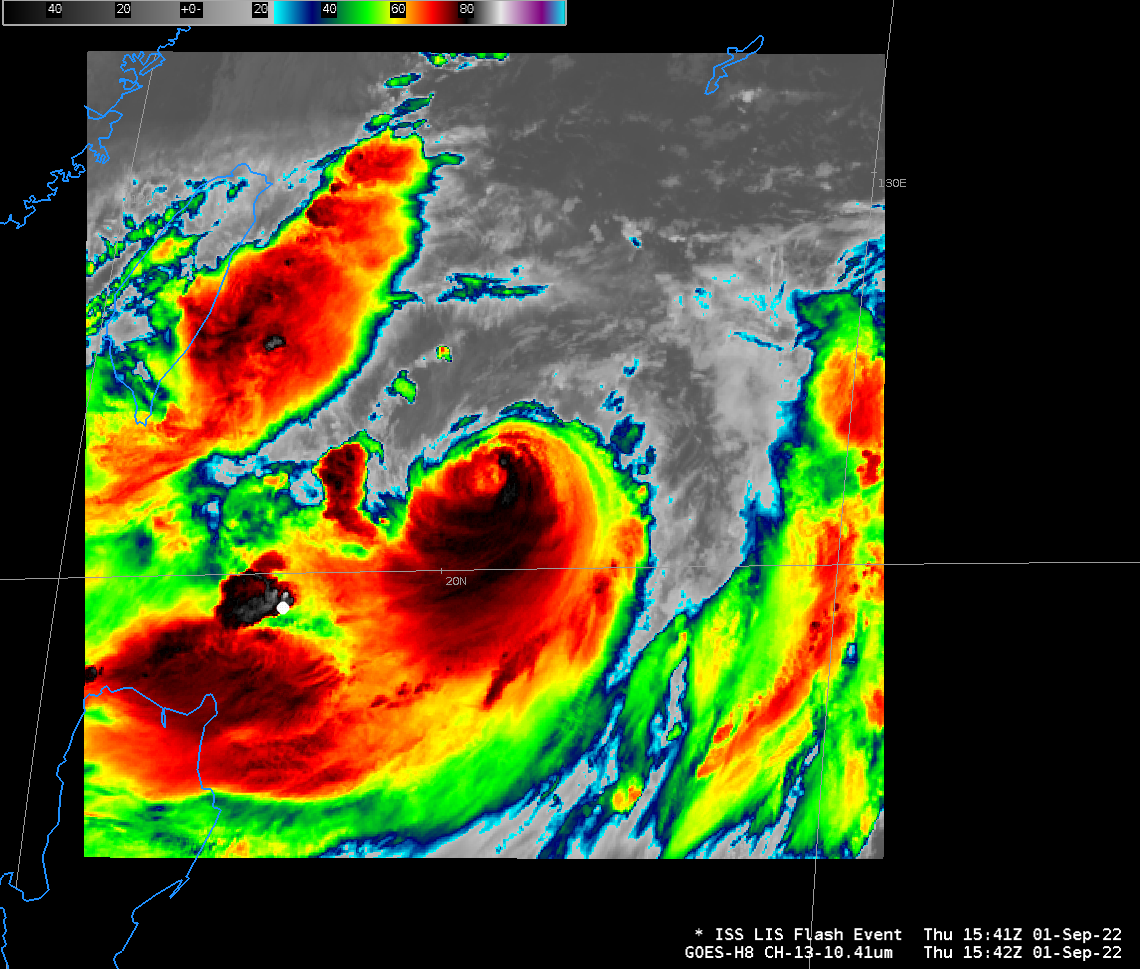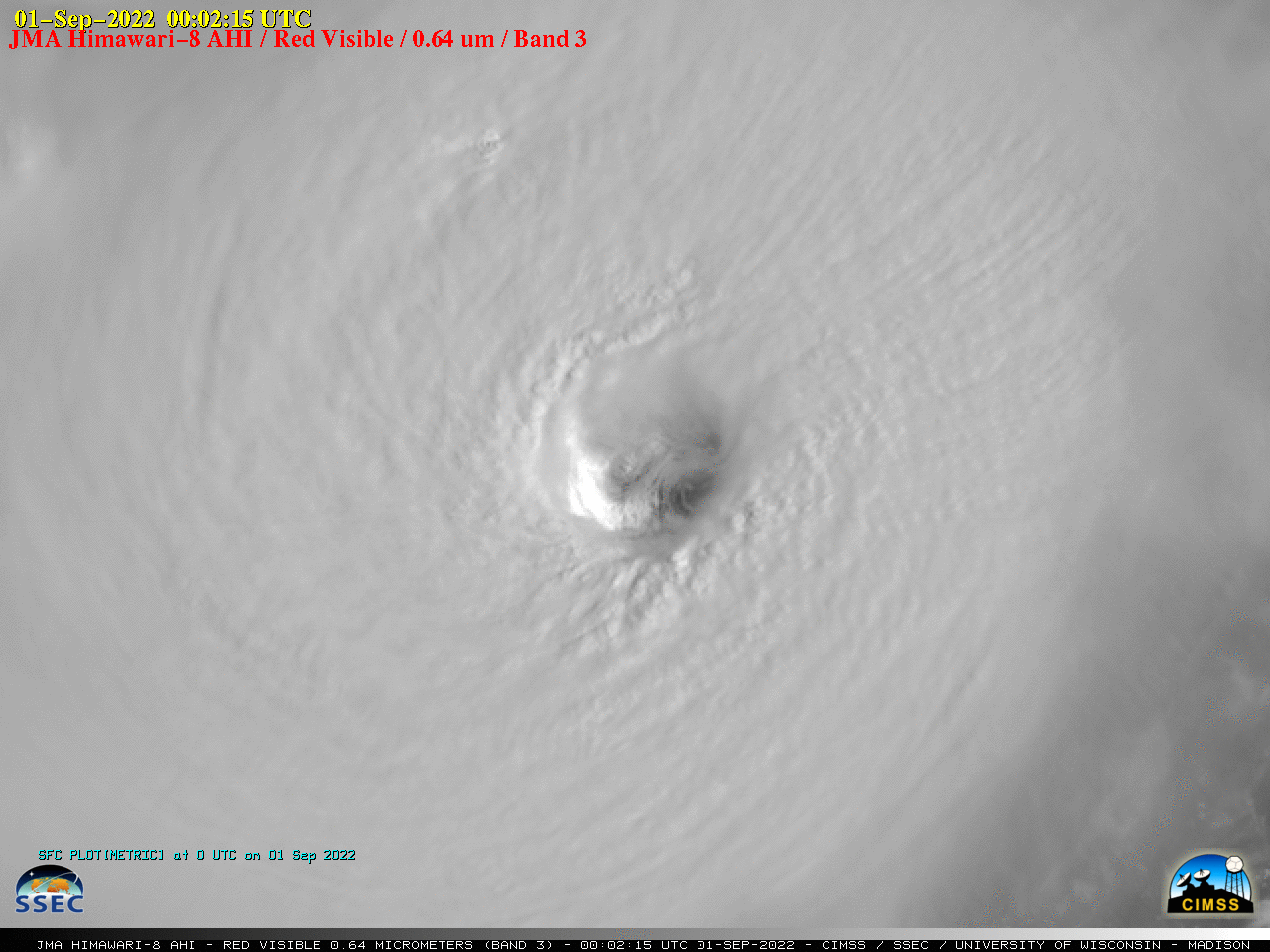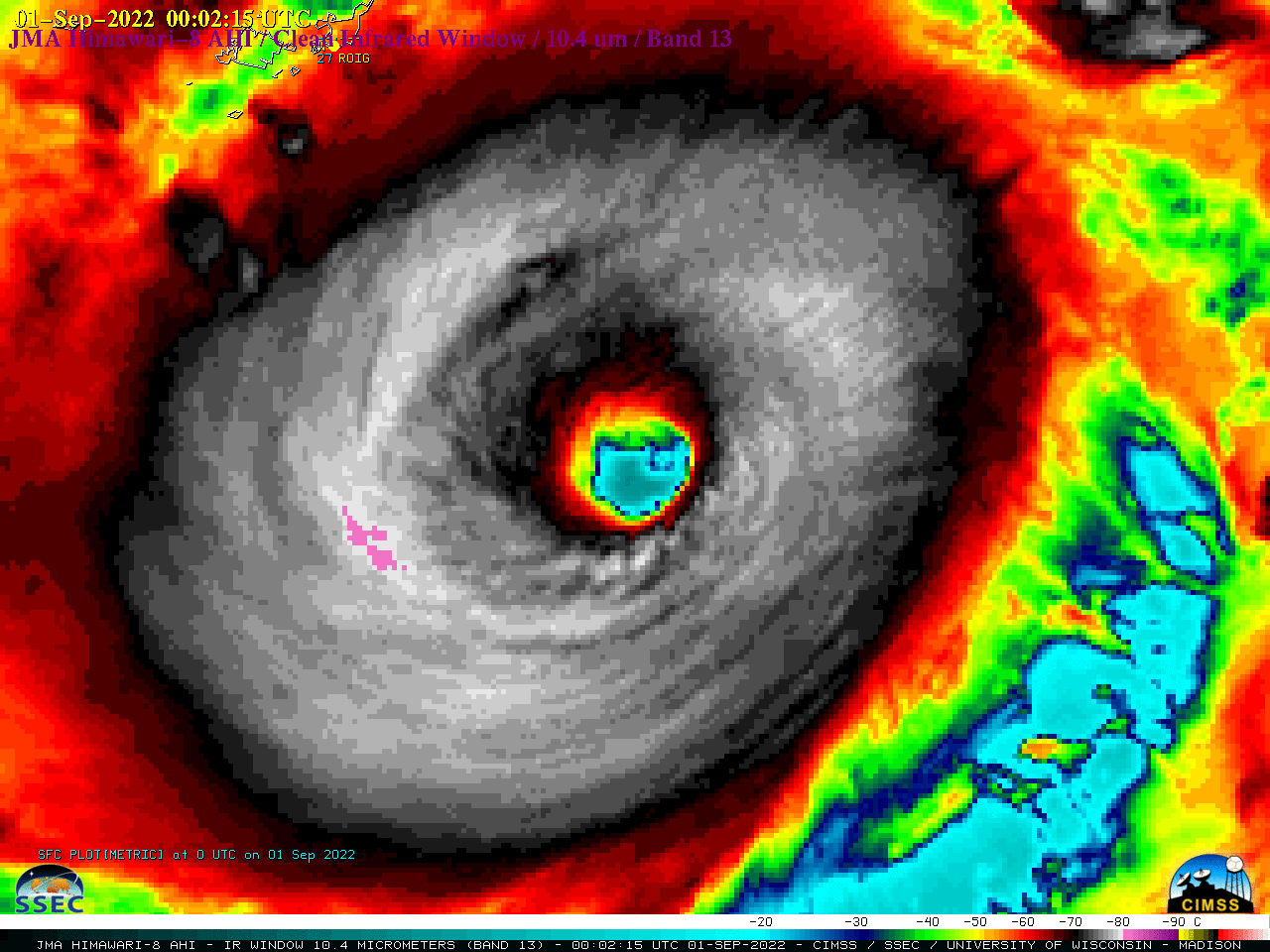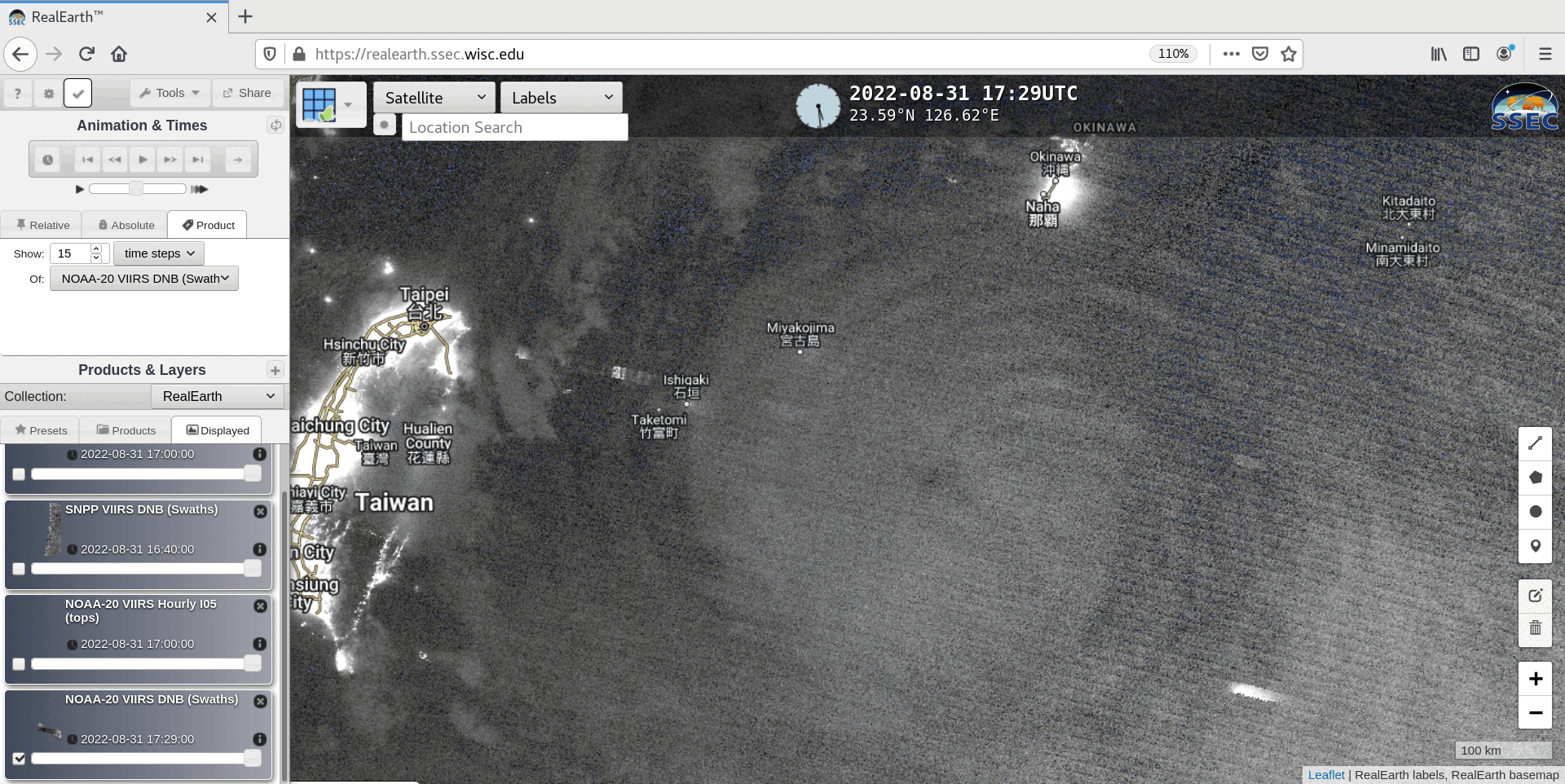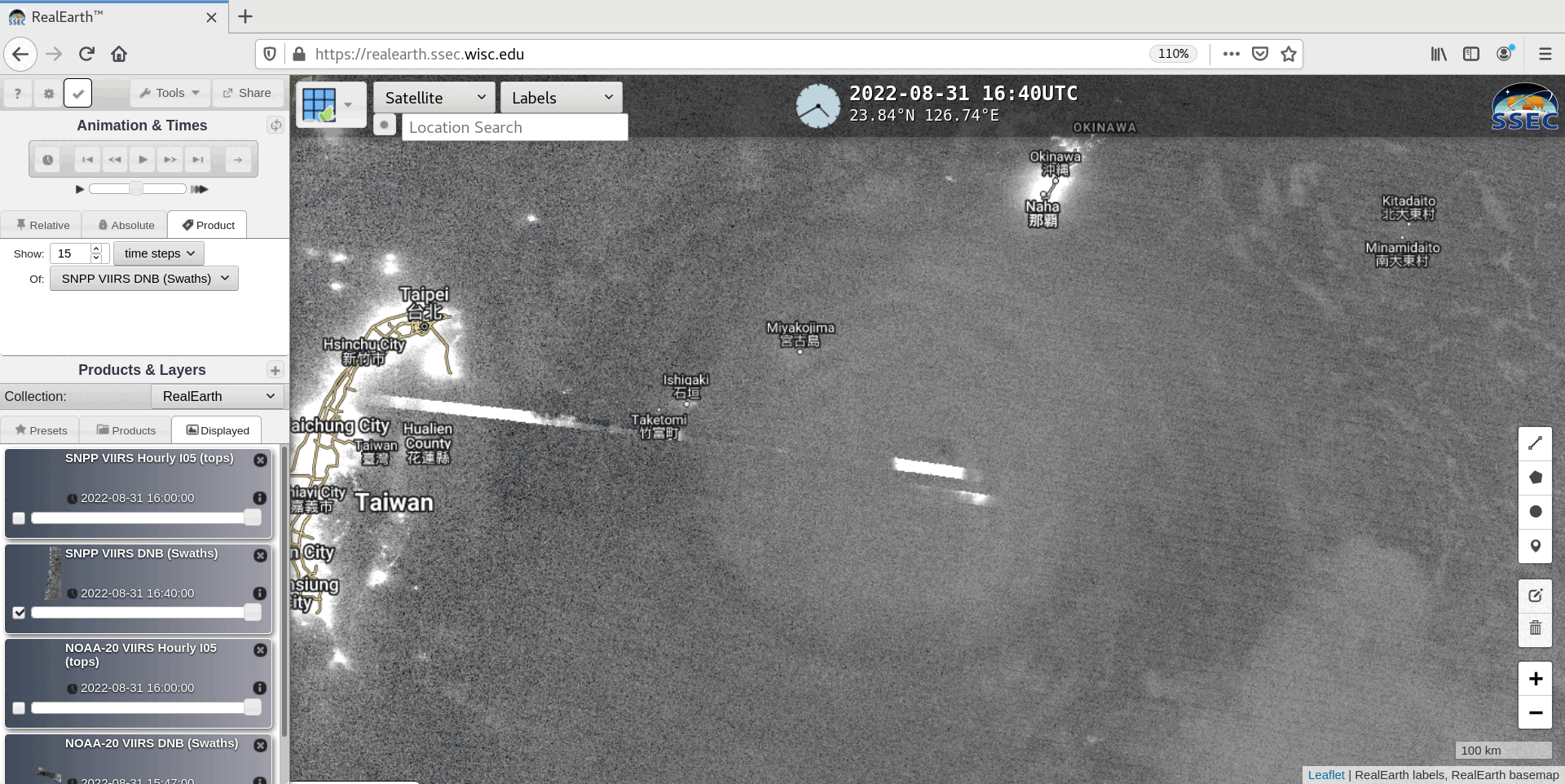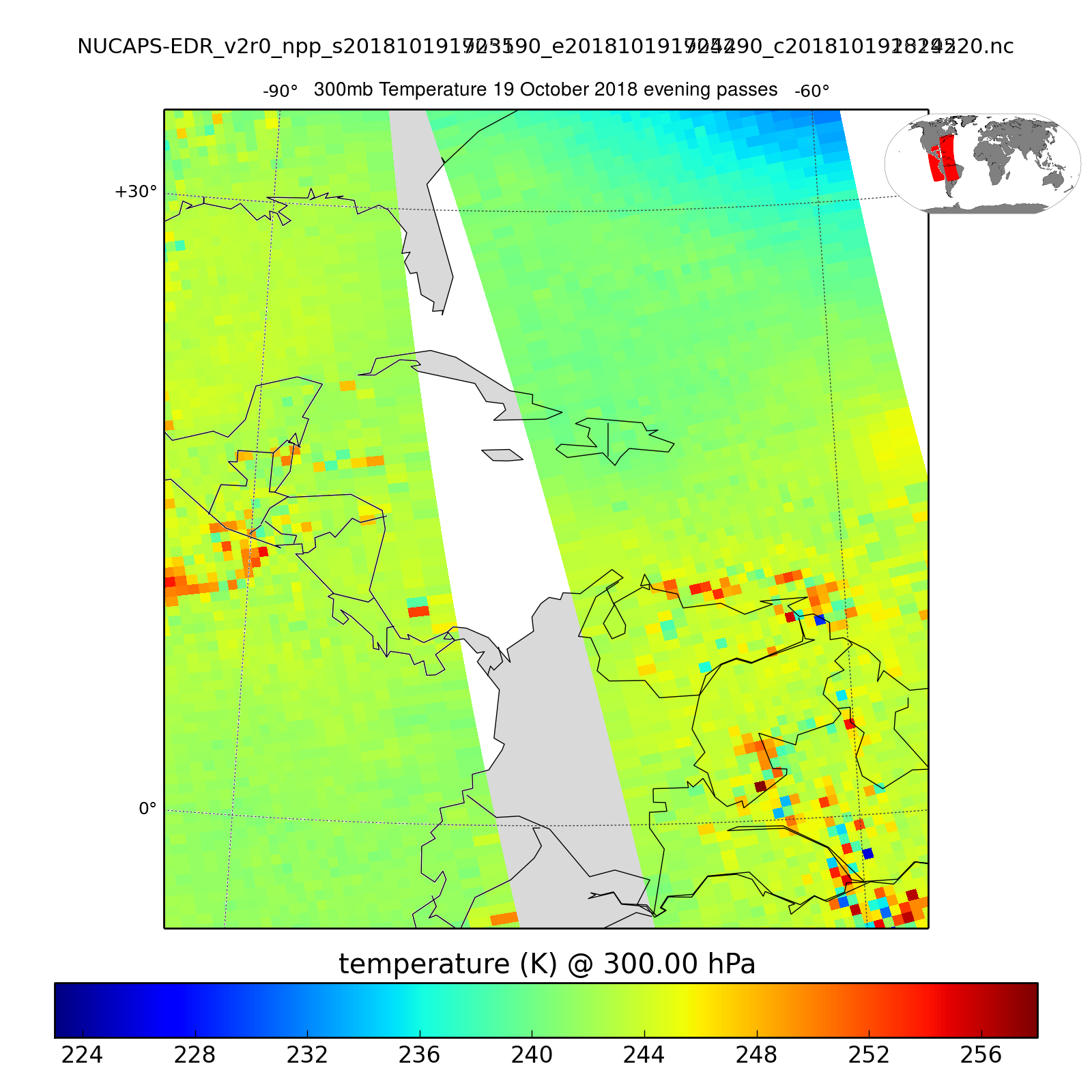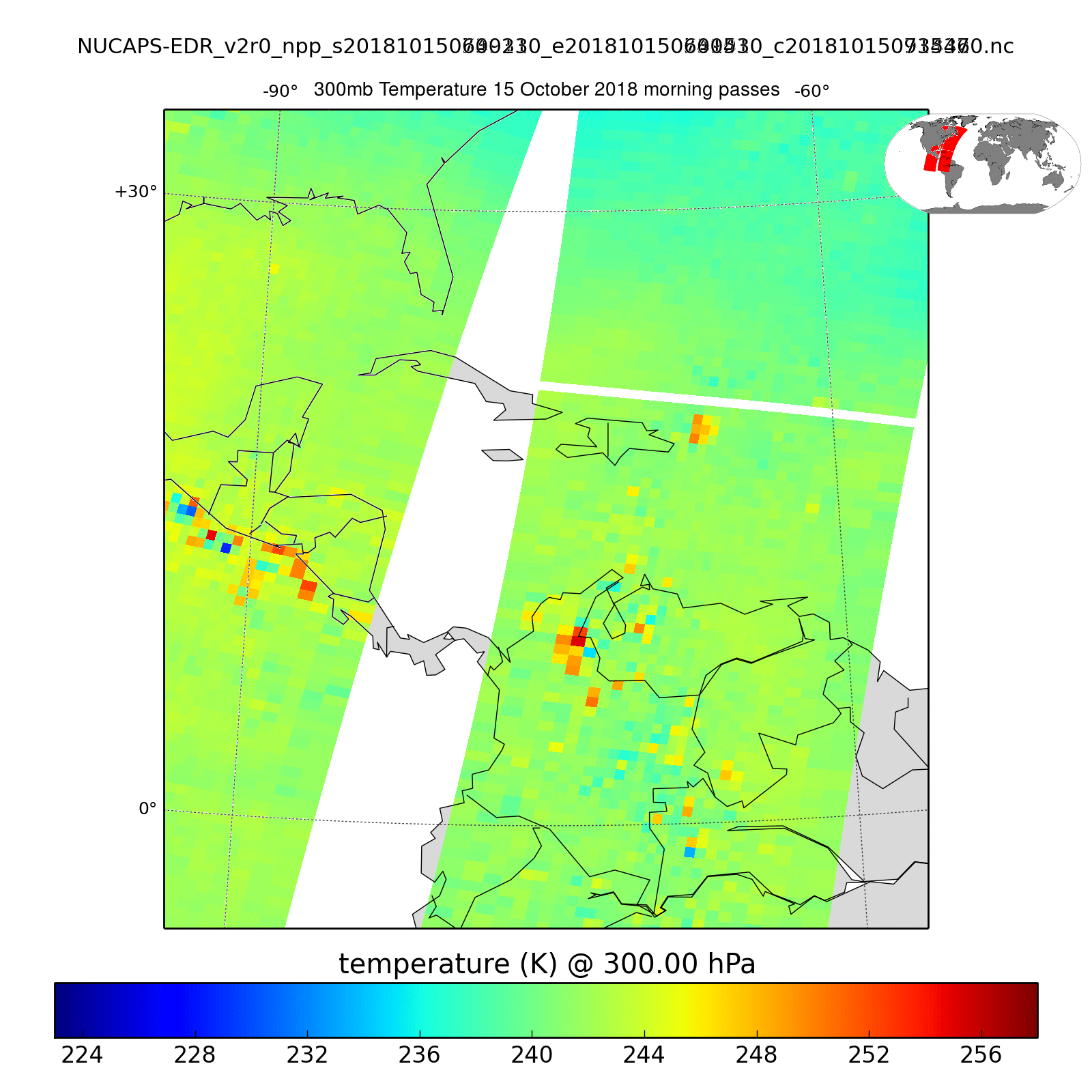
GOES-R Satellites include GOES-16 (the present GOES-East), GOES-17 and GOES-18 (both scanning as GOES-West), and GOES-U, which will become GOES-19 after achieving geostationary orbit after launch (scheduled to occur in 2024). The follow-on to the GOES-R Series is GeoXo (Geostationary Extended Observations), with a launch planned in the 2030s. The GeoXo Imager, GXI, will improve on capability of GOES-R’s Advanced Baseline Imager (ABI). (See this announcement for development of the instrument) One of the channels that might be on this new imager will take observations at/around 5.1 µm. Why was this band chosen? And which present-day instruments can give observations at/near that wavelength to demonstrate that band’s utility?
The Cross-Track Infrared Sounder (CrIS) on NOAA-20 and Suomi-NPP is a Fourier transform spectrometer that provides 2000+ observations in 3 different wavelength ranges: Shortwave infrared (SWIR, 3.92- 4.64 ?m), mid-wave infrared (MWIR, 5.71-8.26 µm) and longwave infrared (LWIR, 9.14-15.38 µm). The toggle above compares 5.71 µm and 7.3 µm observations (wavenumbers 1755 and 1370) from five CrIS granules on 15 August 2022. Note how much warmer the 5.71 µm brightness temperatures are compared to the 7.3 µm brightness temperatures over northeast Mississippi (for example). The shorter wavelength observation are viewing features closer to the boundary layer.
A toggle of GOES-16 imagery and derived products for the same time is shown below. Strong instability (via the Derived Stability Lifted Index) and moisture (from the TPW field) are indicated in a region where the upper troposphere is dry (the 1200 UTC sounding on 15 August at Jackson MS shows considerable mid-level instability, although the SPC Outlook for that day showed only General Thunder.)
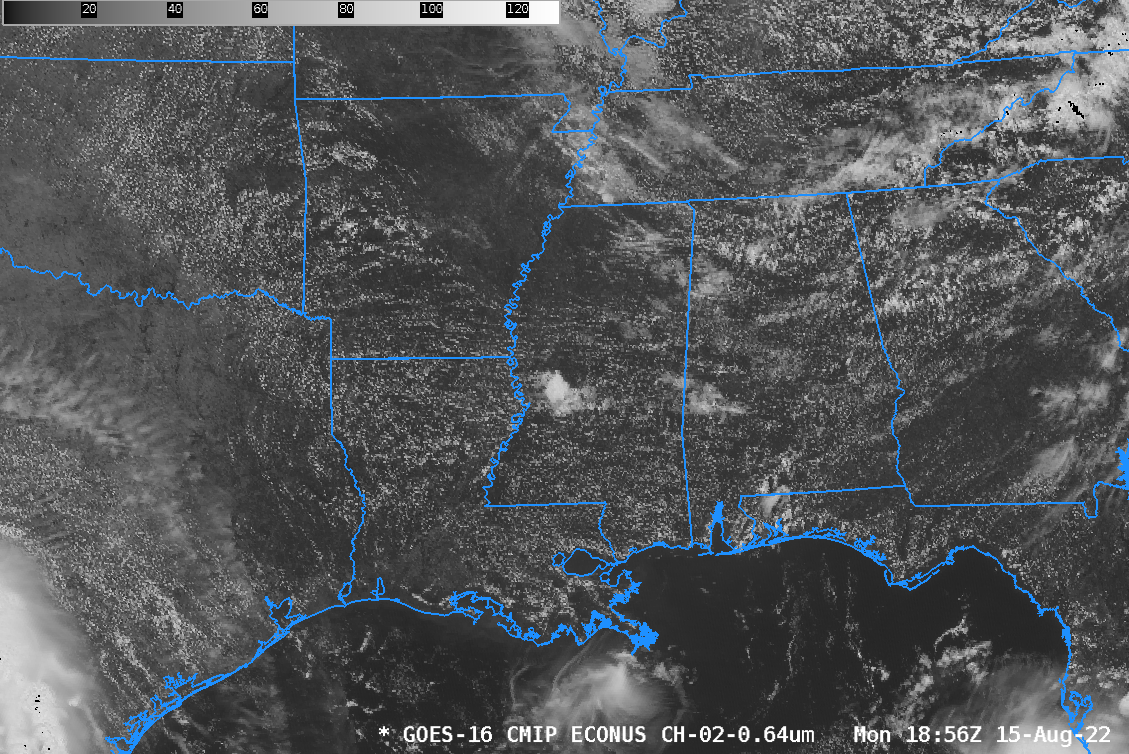
This paper (from the AMS Annual Meeting in 2021) explored some of the issues in using 5.1 µm. A strength of observations at this wavelength is that it lies in a region where absorption (and therefore cooling in the observations) by CO2 is minimal, and where absorption by water vapor in increasing (absorption by water vapor is much stronger for wavelengths between 5.5 µm and 7.5 µm)

This poster from the Collective Madison Meeting of the American Meteorological Society (in 2022) includes weighting function figures for 5.1 µm in various atmospheres, as shown below. In all atmospheres, a significant portion of the signal is coming from the surface. Compare these weighting functions to, for example, the 7.3 µm (“Low-level Water Vapor”, Band 10) for Tropical and US Standard atmospheres: very little surface information is present in observations at 7.3 µm. (See also the CIMSS weighting function website for ABI channels) The conclusion: observations at 5.1 µm can give more information about the water vapor distribution in the boundary layer than present-day water vapor channels on ABI. (See also this paper by Miller et al.)
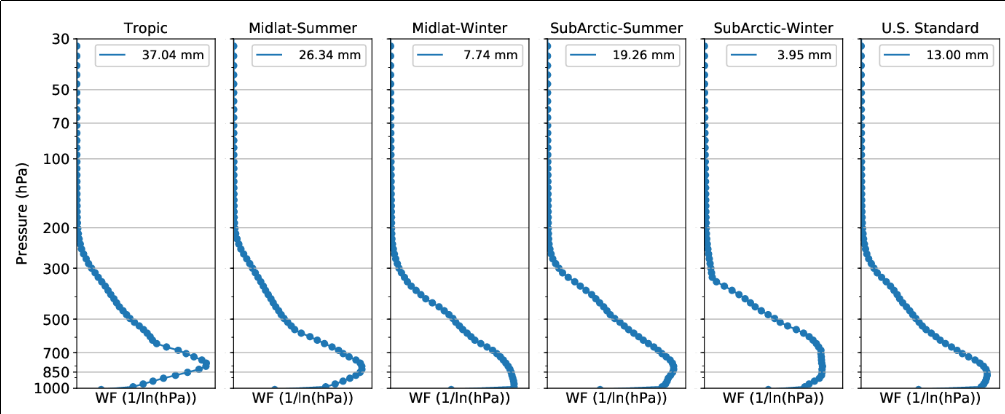
The IASI instrument on MetopB/MetopC does take observations at 5.1 µm. Stay tuned for a blog post using those observations. Thanks to Mat Gunshor, CIMSS, and Tim Schmit, NOAA/STAR, for enlightening discussions about the 5.1 µm observations.
GeoXo is also slated to carry a hyperspectral sounder (GXS). Sounders give far more complete assessments of the state of the atmosphere than an imager, even an advanced one like GXI!
View only this post Read Less


